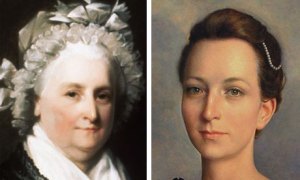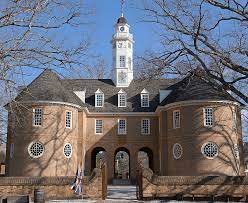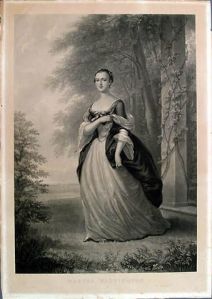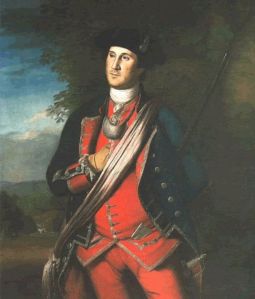Martha Washington was a homebody, and never liked to travel.
Traveling: 18th Century Style
If Martha Washington disliked traveling, and actually was afraid of it, she had reasons. Travelers had limited options: foot, animal, vehicle-and-animal. If water crossing was included, they required a boat or raft, plus a ferryman.
There were few, if any, well-traveled roads. If one made 20-25 miles in a day, it was a quick journey. Occasional taverns or way-stations were the provinces of men, and not suitable for “ladies,” unless in dire straits. Few traveled alone, certainly not women.
Early Martha Journeys
Martha Dandridge (1731-1802) was born and raised in New Kent County, VA, about 25-30 miles from Williamsburg, the Colonial capital, considered the finest and most elegant city in the Colony.
Martha’s father, John Dandridge, served for a time in the Virginia House of Burgesses, and occasionally brought his young family to Williamsburg for shopping, visiting and the social scene. At eighteen, Martha married Daniel Parke Custis, heir to one of the largest plantations in the Colonies. Periodically they traveled between Custis’ “White House” estate in New Kent, and his recently inherited family manse in Williamsburg. Other than those jaunts, and occasional trips to see family, there was no need for traveling. Then Custis died after seven years of marriage. Martha, now a widow, was 25. She had two surviving children: Jack aged 4, and Patsy, aged 2.
Not quite two years later, she met and married George Washington, who had recently inherited a “nice place” along the Potomac River, some 100 miles north of New Kent County. It was all new to her, but she accepted the ordeal of the journey, and grew to love Mount Vernon with all her heart.
Washington was also elected to the Virginia House of Burgesses, and frequently took Martha the children along. She knew Williamsburg – and her sister lived there. It was pleasurable with the company and protection of her husband. Likewise, she enjoyed the occasional trip to visit friends in Alexandria or Fredericksburg, only a half-day’s ride from Mount Vernon.
That sufficed until the Revolutionary War.
The Long, Hard Journeys
In 1775, Ex-Colonel George Washington served as a delegate to the Continental Congress, called to address the numerous grievances and issues between the thirteen colonies and Great Britain, the “mother country.” At 43, fifteen years after his 8-year service in the Virginia Militia, he was the only delegate who had actual military leadership training. When he came to a session wearing his uniform, it was a foregone conclusion that he would be assigned high military leadership. As Massachusetts delegate John Adams, commented, Virginia was the largest and richest colony and should be at the head of it.
Named General of the Continental Army, Washington immediately left for Massachusetts. Save for one brief visit, he did not return to his beloved plantation for eight years.
Naturally, he missed his wife. Patsy had died a few years earlier. Jack had recently married. There was nothing keeping Martha from joining her husband when he desired her company.
As the winter of 1775 approached, he sent for her. It would take a month or more for her to arrive – along with Jack and his bride, appropriate drivers and servants, and a wagon full of supplies that General Washington requested. And Martha’s “medicine” box. He had already made several pleasant acquaintances en route to Boston some months earlier, and supplied introductions to prominent citizens who were happy to host Mrs. Washington-and-party along the way. Appropriate letters were sent long in advance.
Since it was wartime, and she could be a prize, GW usually sent an escort party.
The basic way it worked, was that a station-to-station route was planned: i.e. Mount Vernon to Annapolis, to stay with the Calverts, her daughter-in-law’s family. Annapolis to Baltimore, to stay with Calvert kin. At way-stations along the road, her party might stop for a few hours to rest, water the horses, stretch their own legs, and perhaps get some refreshments (although they usually carried plenty of food). As they neared their destination, a rider was sent on a fast horse to advise their hosts that Mrs. W.-and-party would be arriving. The hosts then sent their own rider to escort their guests to their home.
The party might stay for two or three days – depending on weather, physical health, or how difficult the traveling had been.
Crossing the Rivers
By far, the most daunting legs of Martha Washington’s journeys were across rivers. She was petrified, and even with experience, never overcame her fear. It was one thing to ford a shallow stream or a narrow creek where her carriage and wagon could be pulled through easily enough.
But crossing the Potomac or the Delaware or Hudson was a serious ordeal. These were deep “Moon” rivers (wider than a mile). Mrs. W-and-party were forced to travel miles out of their way to the nearest ferry station. Several trips might be required to take the wagons, the escorts and servants and the horses across. Then, of course, the ferryman (or men) had to recross that river. One crossing and return might take a full day.
Martha Washington always insisted that she be the last to go across. She needed to be convinced it was safe.
The Final Leg
As Mrs. W.-and-party neared their final destination, a fast courier was sent to bring word to the waiting General, who immediately dispatched soldiers to bring her through the last leg of her journey.
During the Revolutionary War, Martha Washington made several trips north: to Boston, to New Jersey (twice), to Philadelphia, Valley Forge and Newburgh, NY.
In some ways it became easier, especially when she had made numerous friends en route. But it was always an ordeal.
Sources:
Brady, Patricia – Martha Washington: An American Life – Viking, 2005
Chadwick, Bruce – The General and Mrs. Washington – Sourcebooks, 2005
Randall, Willard Sterne – George Washington: A Life – Galahad Books, 2006
https://www.mountvernon.org/george-washington/martha-washington/martha-at-the-front/
https://www.history.com/news/martha-washington-military-spouse-battlefield






